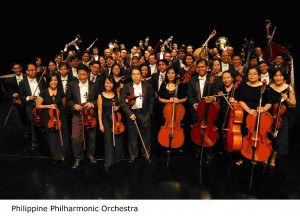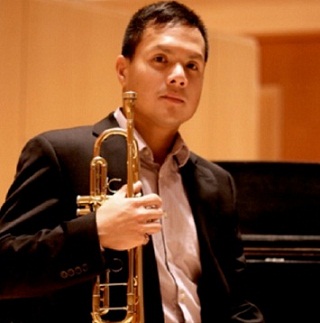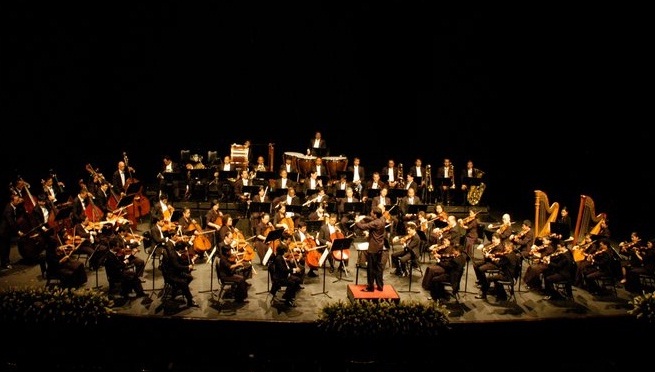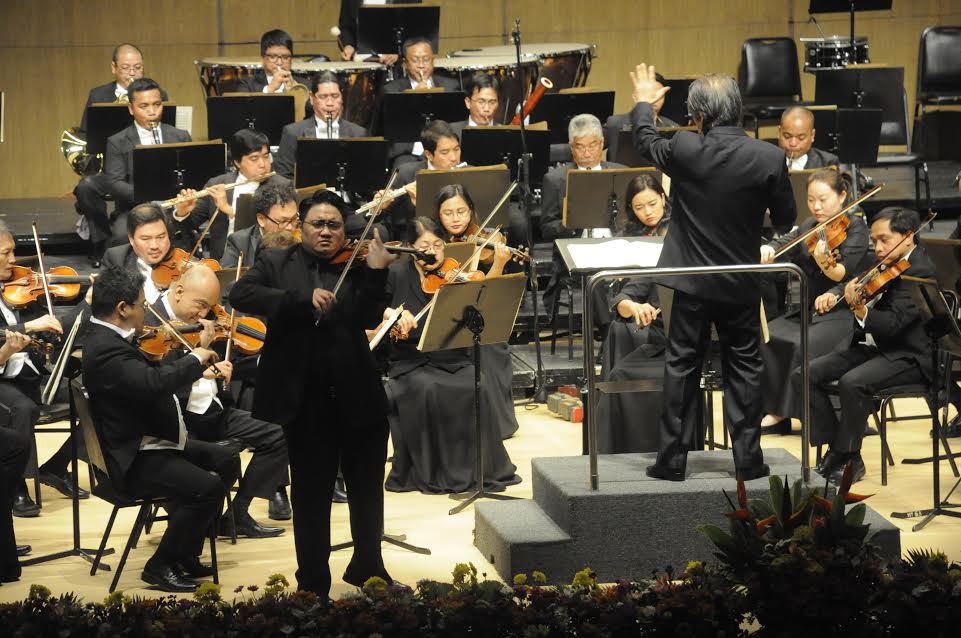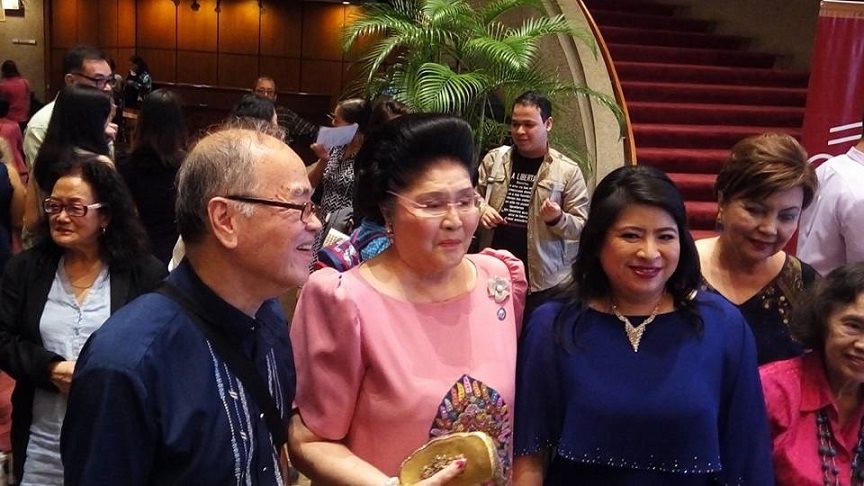
Pianist Hiyas Hila with former first lady, Imelda Marcos, father Tony Hila after the concert. From the FB post of Tony Hila.
Many events in both local and foreign history came to mind as pianist Hiyas Hila took center stage as soloist of the Philippine Philharmonic Sunday afternoon in Mozart’s Piano Concerto No. 23 in A Major, K. 488.
The Mozart concerto was written in 1786 and how this musical piece managed to be alive and remained a concert favorite more than two hundred years later is a testament to the staying power of classical music.
For the record, it was composed two hundred twenty-two years before the proclamation of Philippine Independence in Kawit, Cavite.
By coincidence, Hila’s concert came on the eve of the Philippine Independence Day which makes it a virtual voice of the country’s young musicians in this year’s celebration even as other NAMCYA winners observe the country’s Freedom Day with another performance in a new performing arts venue in Global City.
The CCP concert also came at a time of the 40th anniversary of the Philippine High School for the Arts where Hila graduated with honors. Artists of note who came from this school included pianist Rowena Arrieta, cellist Victor Michael Coo, award-winning actor Shamaine Centenera Buencamino, poet-playwright Nicolas Pichay, ballerina Candice Adea and conductor-music teacher Jeffrey Solares, among others.
By today’s standards, Mozart was a prolific ‘millennial’ in 1786 earning a living as performer-composer in Austria.
In this piano concerto, it turned out that Mozart omitted the trumpets and timpani and replaced them with oboes and clarinets resulting in a dark yet mellow tone.
Indeed, the orchestra was reduced to a small chamber group affording the concerto with the kind of intimacy one only finds in chamber music.
Indeed, the piece was a test for the soloist as a chamber musician.
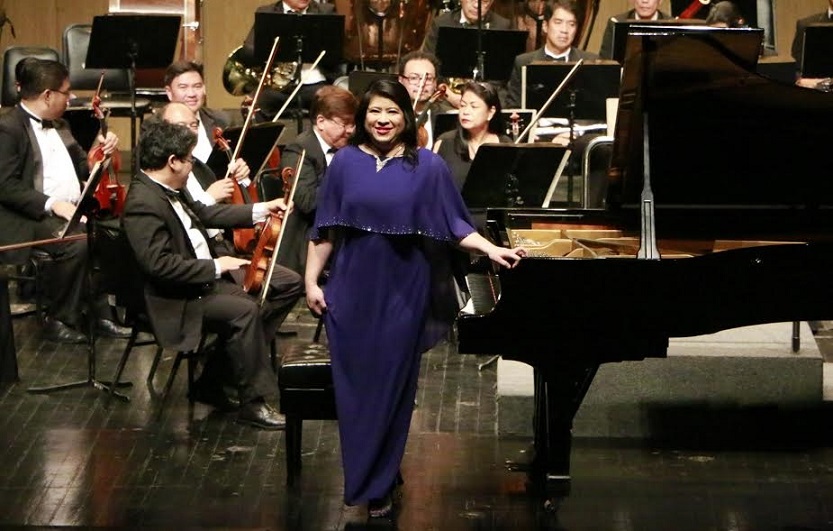
Pianist Hiyas Hila with PPO Chamber music at its best. Photo by Orly Daquipil.
Moreover, the orchestra under the baton of Yoshikazu Fukumura.scored beautifully with a commendable reading of Mozart’s Overture to Cosi Fan Tutte and ending with steely, if, grand Symphony No. 41 in C major, K. 551.
The conductor knows that Mozart is a delicate composer to nail down and any extraneous effects would have stripped it of the subtle musical delicacy it required.
As the afternoon engagement proved, the performance yielded a spritely all-Mozart Sunday matinee program enough to erase the gloomy Sunday weather brought about by a heavy rain before the concert.
Hila knew her concerto inside and out and her demeanor showed she was in excellent Mozart frame.
Dressed in a lavender willowy gown that allowed ample freedom of movements for her hands, Hila navigated the movement’s sonata form with ease. As a Mozart observer pointed out, the movement introduced the music in a double exposition with the theme introduced by the orchestra and later restated by the soloist which Hila delineated with playful but authoritative mark. As a result, both soloist and orchestra successfully defined the graceful lyricism of the concerto’s opening themes.
The second movement called to mind what the country is going through as both orchestra and soloist interpreted some of the most poignant and pensive music the composer had ever composed.
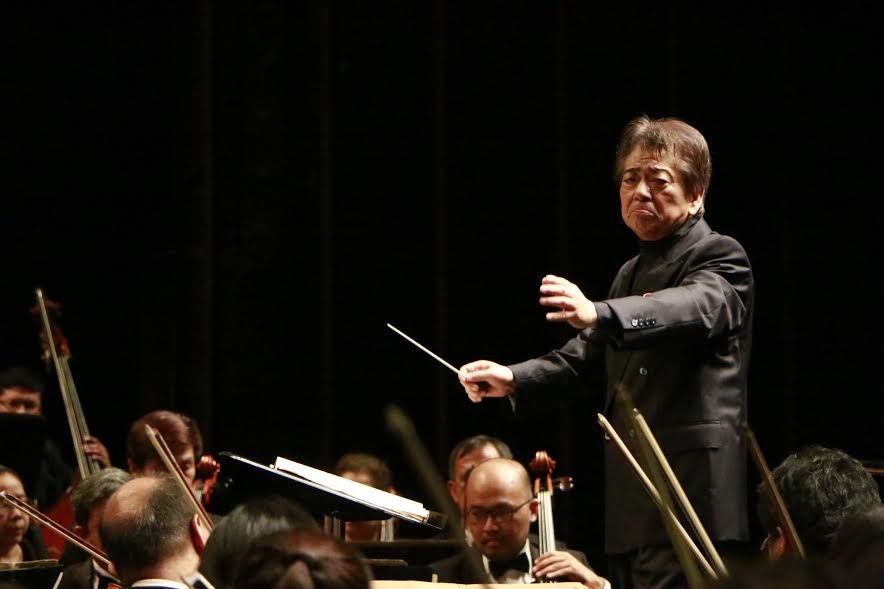
Maestro Yoshikazu Fukumura with PPO. A commendable reading of Mozart’s Overture to Cosi Fan Tutte and Symphony No. 41 in C major, K. 551. Photo by Orly Daquipil.
Indeed, the reading of the second movement was deeply touching and its melancholy thread was enough to conjure images of the sufferings in Marawi and of the images of dead soldiers and civilians.
The playful finale erased the piquant gloom of the adagio movement. Hila had commendable rapport with the orchestra making it pure chamber music at its best. In it the audience savored a magical rondo which showcased Mozart’s mercurial wit and humor. Both orchestra and soloist expertly maneuvered the unexpected key changes with the concerto ending in a playful finale.
As the applause wouldn’t end, Hila obliged with an encore and played a technically tricky “Klintang” by Ramon Santos.
As it sounded, the piece was indeed inspired by the Mindanao musical instrument, kulintang and one could imagine what pianists go through in executing this piece.
Hila lived up to the kulintang challenge and echoed deeply lyrical images of Mindanao.
It was a timely encore piece as the country mourns the senseless loss of lives in Marawi.
Present in the concert was former first lady, Imelda Marcos, who founded the Philippine High School for the Arts forty years ago.

